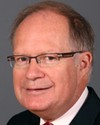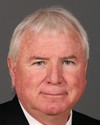That is what we will see, Mr. Chairman.
First, I want to welcome our general, our Vice-Chief of the Defence Staff and our deputy ministers.
Let me come back to the minister's presentation. I very much appreciate the minister's express will to help the Afghanie army become autonomous. I also appreciate the concrete achievements, such as the 25 schools and the damn in Dhala. I find this most encouraging. Certainly, I will support the extra expenditures, because they will clearly serve to outfit our soldiers on the one hand so that they can carry out their mission, and on the other hand to protect them. For instance, I am thinking of Valcartier where we have a defence centre. Deployment was discussed, but some important research is also being done with regard to that. Right now, I want to congratulate the forces for their remarkable work. Especially, as you know, a new turnaround is beginning in Quebec with a deployment from Valcartier. We will continue following the mission very closely.
That being said, let me come back to the issue of opium production. This committee made a study, which raised the possibility of using opium for pharmaceutical purposes, or of purchasing opium. I think that this is an interesting alternative proposed by our committee.
My questions, Mr. Chairman, are first and foremost about the shipbuilding industry. I will put them more specifically to the Vice-Chief of the Defence Staff.
The minister raised the issue of funds for modernizing and extending the longevity of the Halifax class frigates. I would like to know if you could tell us what the funds will be spent for and whether any Canadian companies will be able to benefit from them. More generally, Mr. Rouleau, could you give us a picture of your intentions—you discussed the Joint Support Ship with Mr. Wilfert—regarding the modernization of the Canadian fleet in relation to the Canadian shipbuilding industry and to Canadian shipyards.




